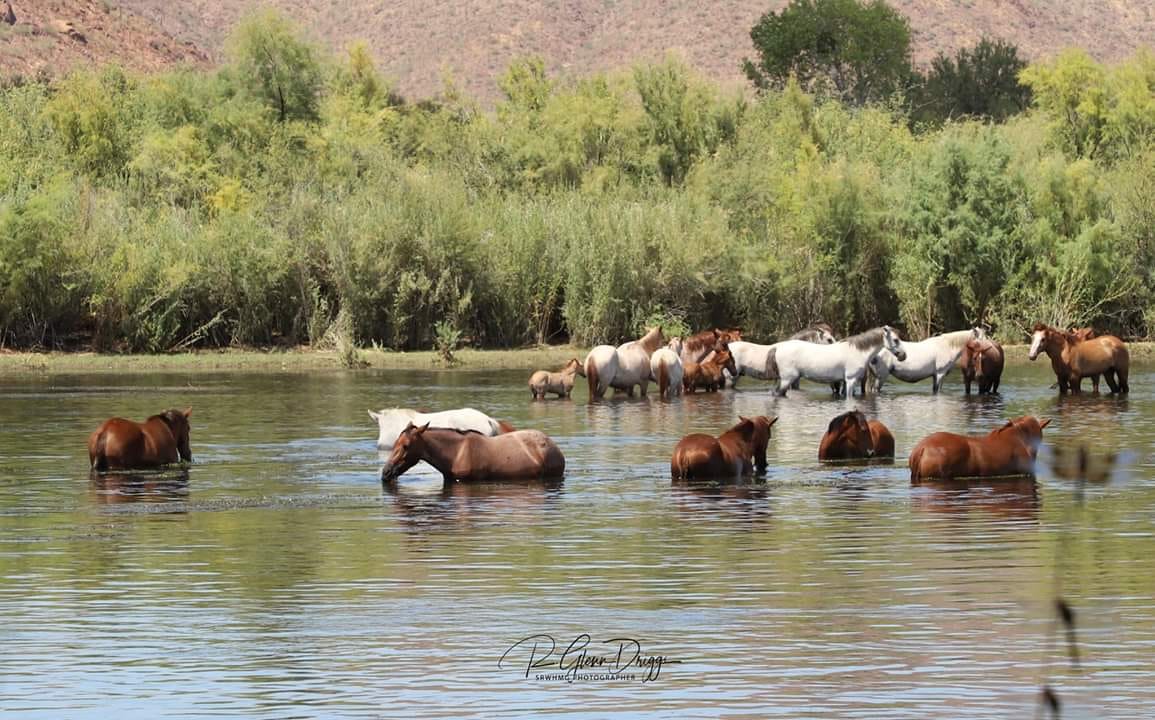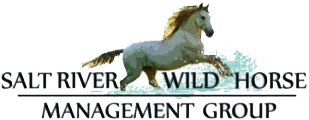
Migrating patterns
Some people have expressed concern about “what if our supplemental feed program will influence their seasonal migrating patterns?”
We give you exhibit A. These bands have already migrated down to their historic home ranges just like we said they would, feed stations or no feed stations. (We have no feed stations anywhere near this area)
This is the very lowest part of the lower Salt River at Granite Reef. Every late afternoon you’ll be able to see them here. They are eating something much more palatable than dry hay; river eelgrass.
They have stopped being Hay Cafe customers all by themselves! (Although we are still feeding the ones who need it)
How do the birds know when to start migrating? How do the whales know, how do the horses know? Well we don’t have a detailed answer, nature is mysterious, but we do know, that we can count on it!
These migration patterns which happen at the same time every year, are an important key to their survival. The eelgrass, although thought to be of no value by some scientists, provides the horses with the moisture needed, to digest the mesquite beans that they eat, which otherwise can form big clots in their digestive tract. (This can cause deadly colic.) The horses love their eelgrass. If you have pictures of them eating it, post them here!
Likewise it is important for them to migrate to their fall/winter forage grounds after the eelgrass dries up. The eelgrass die-off will happen shortly after the river is turned off for the winter by SRP in late September.
So while they live in the most unnatural of habitats (too many people in the summer, too little river in the winter) they have found a way to make it all work for them.
Wild horses are amazing aren’t they?
SRWHMG.
